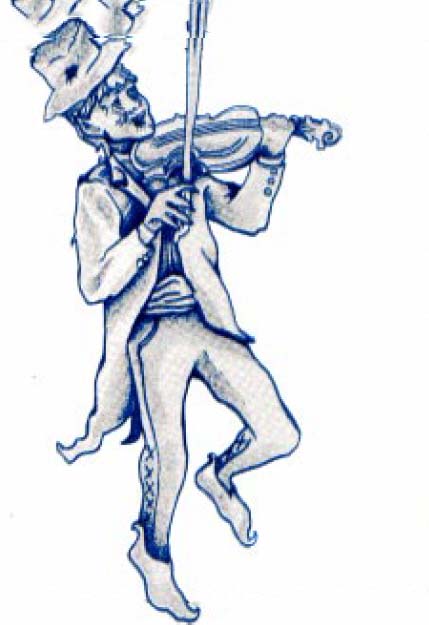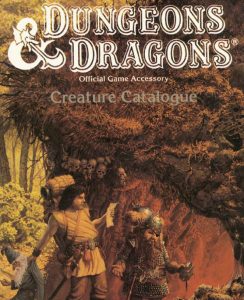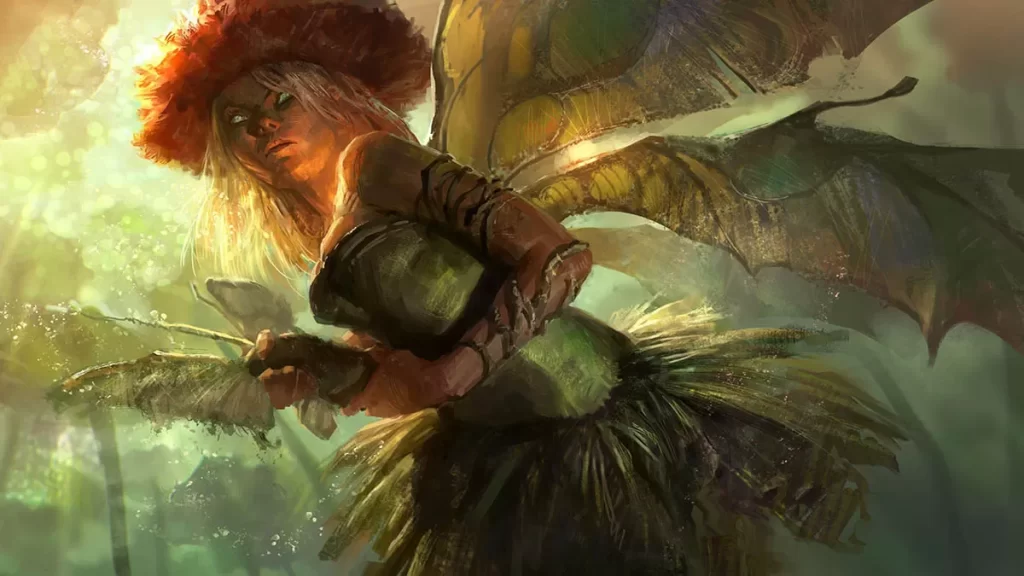
In the mystical realm of faeries, where whimsy meets enigma, creatures of various shapes, sizes, and temperaments flourish. Among these elusive beings, classifying them as harmful or harmless can become a contentious matter. However, three distinct types have been discerned: the good, the bad, and the clumsy. Today, we turn our attention to the Brambles, a group whose aggressiveness belies their tiny stature.
The Brambles, rumored to have evolved from outcasts of "polite" faerie society, might be seen as descendants of the Gorse due to their size, name, and affinity for pointy things. They resemble tiny, dried-up humanoids with dark, wrinkled skin, pointed fingers, and ears sharper than those of elves. But these features are mostly concealed by their unique plate-mail armor adorned with spines, giving an impression of miniature dragon-wings.
This spine-covered armor provides the Bramble with an AC 18 defense, and its barbs inflict automatic 1d6 damage to any creature that dares come too close. Attackers wearing armor can save themselves by rolling above their AC value on 1d12 to avoid injury. Moreover, one in ten Brambles possesses poison-tipped wing-spines, causing painful burning (-2 on attack and damage rolls for 2d10 rounds) unless a save vs. poison with a -3 penalty is made, halving the effects.
Brambles are often found as bizarre pixie-knights, riding porcupines, hedgehogs, al-mirajs, and others, wielding barbed spears (1d6 damage on a hit) and controlling their mounts with a daily charm mount spell.
Despite their diminutive size, Brambles are known for their supreme confidence and audacity. They challenge "giants" to wrestling matches, speak their language, and the languages of other faerie creatures, and are skilled enough in Elvish to strike business deals or offer challenges.
Brambles may collect small treasures, used to bribe other creatures into crafting their special armor. A complete, unoccupied suit of their armor might fetch 2d8 x 10 gp to a collector. However, a poisonous Bramble's spines could be harvested by a hunter for blade poison, but it would take ten or more to coat a long sword.
Though vicious, aggressive, and mostly seen as a menace, the complexity of Brambles adds a unique color to the faerie world. They are more than just a curiosity; they are a testament to the variety and richness of a world that is still only partially understood, embodying the multifaceted nature of faerie existence.
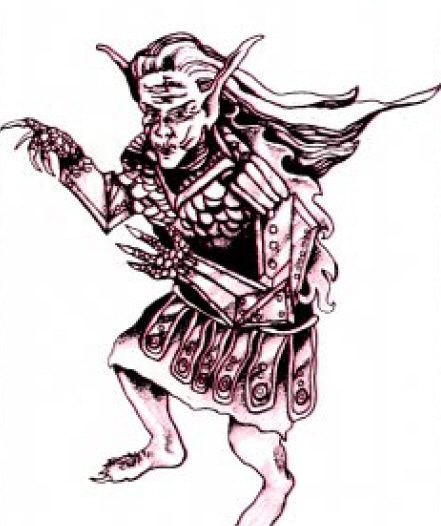
Dobies are small humanoids, similar in appearance to their cousins, brownies. They live peaceful, reclusive lives, and when they encounter humans or other civilized creatures, they try to be helpful neighbors to these "big folk," with mixed results.
Dobies resemble small elves, with brown eyes and hair, and work-a-day clothing to match. Their features are generally plain; they have ears that are only slightly pointed (as opposed to the extreme points of brownies), their faces are more reminiscent of tired farmers than bright-eyed children, and while they move with a free gait, no one would describe them as nimble. In fact, the image ones gets of them is more in line with "country bumpkin" than "mischievous faerie."
Dobies are inoffensive creatures, and if threatened, prefer to walk or sneak away than to fight. Still, they are very protective of their big-folk neighbors and will fight to defend them and their property against all comers.
In combat, a dobie prefers to cast the spells to confuse or fumble. A dobie also can use a tool, such as a hoe or hammer, as a makeshift weapon doing 1d2 points damage on a hit. If they come across a real weapon, such as a dagger or short sword their inexperience means that they still only do 1d3 damage on hits. Although their features and size vary, female and young dobies all fight and cast spells with the same skill.
Unlike some other faeries who can see through illusions, Dobies are particularly gullible, and they suffer a -3 penalty on saving throws versus illusions and charms.
As good creatures, Dobies feel obligated to pay for the food they glean and the land they live on, and they offer payment indeed, such as temporarily guarding treasure or doing household chores. Because of their reclusive nature, the dobie won't ask what sort of chores need doing, and normally will perform his favors at night or when there's nobody around to see him, but his labors seldom go unnoticed.
One of the few times that a Dobie's fumbling becomes a blessing is when thieves, brigands, or other hostile beings (including wild animals) appear on the property. Dobies are protective of their adopted families and will try to defend the goods and lives of their landlords against attack, especially if the farmer isn't there to defend it himself. The scene after a typical fight with a Dobie family will be a jumbled mess of broken furniture, smashed crockery, and the like, but at least the lives and major goods of the farmer will have been safeguarded.
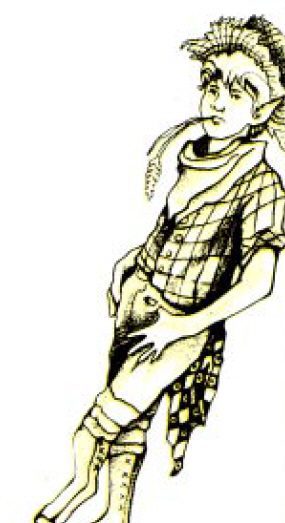
The Faerie Fiddler is a strange icon of faerie society. Always found in a community of faeries, there is never more than one Faerie Fiddler per community. The Faerie Fiddler's motivations are to protect other members of the society and to make the world more pleasant, according to its understanding of the term.
In appearance, Faerie Fiddlers are among the most human-looking of faeries. They resemble nothing so much as old, diminutive human males (there are no female fiddlers), dressed in somber, archaic clothes (such as a battered black top hat and tails), and playing a most exquisite, tiny fiddle. For all of their aged appearance, they are always in apparent good spirits, and while so skinny that it is a wonder they can keep the front and back of their coats apart, they are apparently spry and lively.
Faerie Fiddlers never begin a fight, but they are quite able to defend themselves and others if one breaks out. The fiddler's primary defense is his high armor class, the result of its constant, capering dance and small size. As a faerie creature, the fiddler is naturally resistant to most forms of magic, and considering the nature of its magics, it isn't surprising to find that they are completely immune to the effects of all spells from the enchantment/charm school.
The Faerie Fiddler has the ability to play a number of magical tunes on his fiddle, both for enjoyment and in combat. The least of these magical tunes is one that prevents hearers from experiencing hunger, thirst, or fatigue while dancing, a tune that is woven through the melodies of common dancing songs to provide dance music for faeries and the non-faeries they invite into their circles. As this spells effects can be felt only while the hearer is dancing, it will provide benefits only in combat if the hearer has the Dancing non-weapon proficiency and thus can alter the steps of the dance to allow fighting at the same time. Coincidentally, all faeries in a community with a Faerie Fiddler will have the equivalent of this proficiency, which means that they will spin and whirl as if dancing when in combat, and they will never tire from their efforts. A saving throw vs. spells will negate the effects of this tune, but only if the hearer specifically wants to resist its charms.
The fiddler will use this spell to assist his faerie friends when they fight intruders, to cover the escape of those who are unable or unwilling to fight, and to cover his own escape when he finds it necessary to leave the field. Because of the fiddler's courage, he is willing to lay down his life if it will allow other faerie-folk to escape, so he will depart only after all other faeries are secure.
The most powerful tune that a Faerie Fiddler can play is used on some-one who offends faerie sensibilities without overtly attacking the faeries, such as someone who refuses to dance with them, who claims not to believe in their very existence, or especially someone who tries to cheat a faerie in some way. This tune has the same fatigue-banishing effects of the first tune but combines with it a powerful time-distorting effect, like an exaggerated time stop spell. For every hour spent dancing, a year will pass in the outside world, and as the fatigue-banishing effects of the tune make one capable of dancing for a long time (i.e., if a human under the effects of this magical tune has danced for four hours, four years will have passed in the real world when he returns to his home, probably to find it long-sold after his "mysterious disappearance"). Again, a saving throw vs. spells will negate all effects of the spell, but the hearer must consciously desire to resist or receive no saving throw at all.
This Time Stop tune can be played only once per month, on the night of a full moon, and as mortal offenses against faeries can happen at any time of the month, a fiddler who wants to use this spell on an offender at some other time of the month will have to lure him back to the faerie circle. The common method to achieve this is for the fiddler to pretend that he failed to notice the offense, and then to invite the offender back to the circle a few days hence for a celebration that promises to be a once-in-a-lifetime experience for the mortal invitee. Other ruses will be tailored to the personality of the offender, such as "accidentally" letting slip the fact that a precious faerie treasure will be on display during the full moon if the offender is a thief or challenging the offender to return ("You wouldn't dare come back here and do that again on the night of the full moon!") if he is a belligerent sort.
Faerie Fiddlers have no society of their own, as they are never seen with others of their type. They dwell among communities of faerie creatures, and provide a number of services for them, most especially fiddling at their convocations, parties, and gatherings. Naturally, they speak the languages of every type of faerie folk, and those of any nearby human or demi human community.
The fiddle of a Faerie Fiddler isn't magical (all its effects are the natural magic of the fiddler being channeled through the instrument), but it still has a resale value of 3d20 gp for its fine quality and miniature size.
